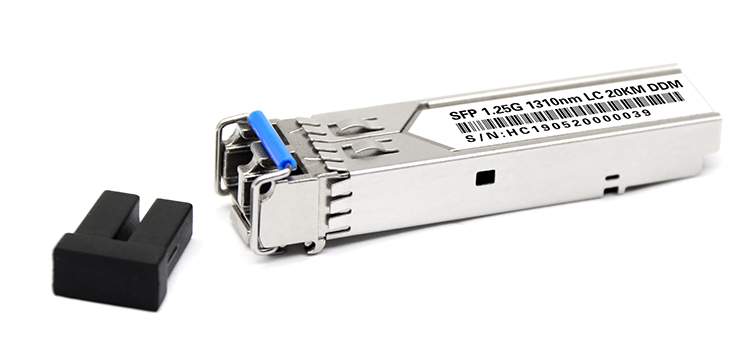Foreword:
With the development of science and technology, the speed of urban informatization is accelerating, and the requirements for communication technology are becoming higher and higher. Optical fibers have become more and more popular in communication due to their advantages of fast transmission speed, long distance, safety and stability, anti-interference, and convenient expansion. First choice when laying. We often see that the long-distance data transmission requirements in building intelligent projects basically use optical fiber transmission. The link between this requires optical modules and fiber optic transceivers. Many users have some doubts about the use of optical modules and fiber optic transceivers. How should the two be connected? What are the precautions?
Let us first understand the difference between the two:
1.An optical module is a functional module, or an accessory, a passive device that cannot be used alone. It is only used in switches and devices with optical module slots; optical fiber transceivers are functional devices and are separate active The equipment can be used alone with the power supply;
2.The optical module itself can simplify the network and reduce the point of failure, and the use of optical fiber transceivers will increase a lot of equipment, greatly increasing the failure rate and occupying the storage space of the cabinet, which is not beautiful;
3.The optical module supports hot swapping, and the configuration is relatively flexible; the optical fiber transceiver is relatively fixed, and it will be more troublesome to replace and upgrade than the optical module;
4.Optical modules are more expensive than optical fiber transceivers, but they are relatively stable and not easy to damage; optical fiber transceivers are economical and practical, but many factors such as power adapters, fiber status, and network cable status must be considered, and transmission loss accounts for about 30%;
5.Optical modules are mainly used for optical interfaces of optical network communication equipment such as aggregation switches, core routers, DSLAM, OLT and other equipment, such as: computer video, data communication, wireless voice communication and other optical fiber network backbone; optical fiber transceivers are used in Ethernet In the actual network environment where the network cable cannot be covered and fiber must be used to extend the transmission distance, it is usually located in the access layer application of broadband metropolitan area network, such as: high-definition video image transmission for monitoring security engineering and the connection of the last kilometer line of fiber to On metropolitan area networks and higher-level networks;
In addition, pay attention to several points when connecting the optical fiber module and the optical fiber transceiver: the wavelength and the transmission distance must be the same, for example, the wavelength is 1310nm or 850nm at the same time, the transmission distance is 10km; the fiber jumper or pigtail must be the same interface to connect Generally, the SC port used by the optical fiber transceiver and the LC port are used by the optical module. This point will prompt the choice of interface type when purchasing. At the same time, the rate of the optical fiber transceiver and the optical module must be the same. For example, the Gigabit transceiver corresponds to 1.25G optical module, 100M to 100M, and Gigabit to Gigabit; the optical fiber type of the optical module must be the same, single fiber to single fiber Dual fiber to dual fiber.






